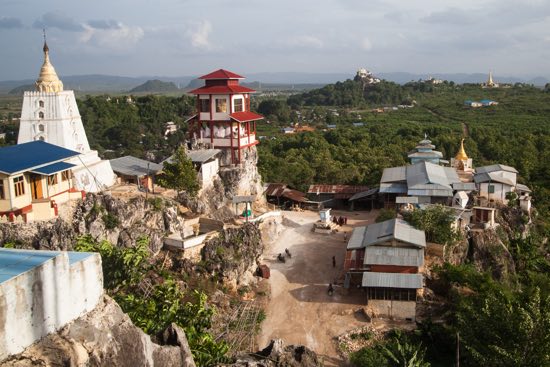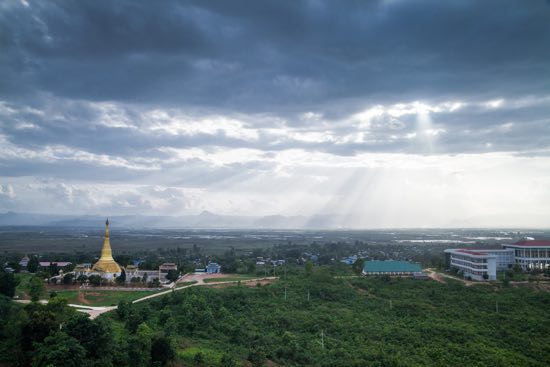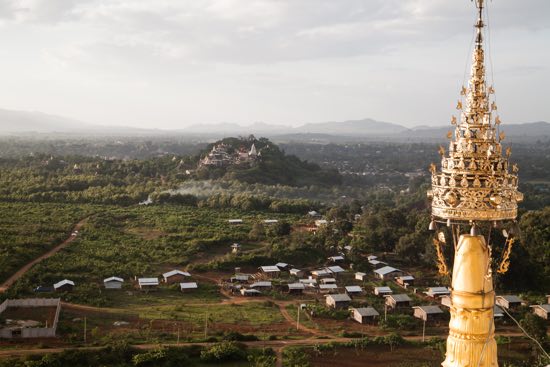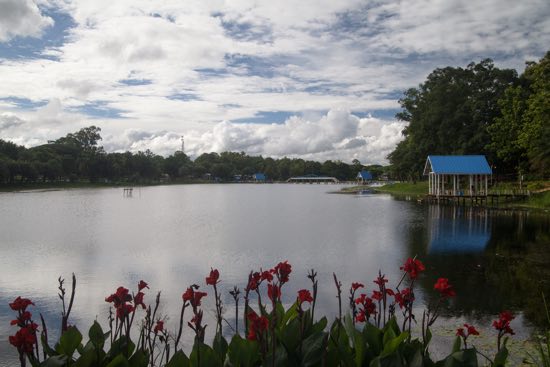
Really!
Foreigner-friendly guest houses are scattered throughout Loikaw city and each has their own pros and cons, but in general they tend to be better value for your dollar than other areas in Burma. Restaurants are also sprinkled around town, and many offer multiple styles of food, including Thai, Chinese, Burmese and Western. Prices are reasonable, and their river fish and prawns can be extremely tasty.Most of the region’s attractions are natural, such as lakes and caves, and trekking is popular. Hill-top pagodas provide stunning views of the area, stretching all the way to the Shan mountain range. You’ll also find that the Kayah people are friendly and intrigued by the relatively unusual sight of foreign tourists. 

The region’s faith is an amalgam of beliefs — Christian churches set up by missionaries play an important role in daily life alongside mosques and temples. There’s also a continued strong presence of local ancient animistic beliefs involving Kayhto Bo “spirit poles”, which are the source of a large festival held once a year.
Orientation
You’ll find most of the population of Loikaw city surrounding the lake in the middle of town, or along the river in the south. The roads attempt a grid structure, but are more often than not interrupted by rivers and lakes of varying sizes. The town is small enough to cross by motorbike in 15 minutes, but at the time of research, finding a motorbike to rent (or even a bicycle) was near impossible. Due to the lack of self-transporting vehicles, using a guide and their transport is the usual way of getting in, out and around town.

Within town, to the south just past the river, is a series of hilltop pagodas that are a must visit. Myaka Lup pagoda, Shwe Let War pagoda and Nagayon pagoda stand behind the most famous Taung Kwe pagoda, which can be seen from almost anywhere in the city. Other sights such as Seven Step Lakes and the villages west of town lie a good half hour to an hour away and you will require a guide to visit them. A guide (or at least transport) is also needed to take you to Kyet Cave, about an hour or so’s drive east of town.
The airport and bus station lie in the north along the main road in and out of town. Trishaws and taxis are available throughout town; the easiest place to find trishaws is near the river in the south, while taxis can be reserved through your hotel. Many city and area maps are given out at hotels, but be warned, these maps are not to scale!

ATMs and banks are found along the main road leading into town and hotels can exchange money for you, but at a poor rate compared to the banks. Internet is available mostly at restaurants and the KKS cafes. Many hotels have WiFi available but don’t expect a fast connection.
For emergency services, the Loikaw hospital T: (08) 321 511 is in the northern area of town, just south of the airport. The police station is next to the banks on the main road.
For tourist info, Friend World can be reached at (08) 322 717, and Bardo Travel and Tours has a Loikaw branch at Ma / 210 Hnin Si Road, Mingalar Quarter. T: (083) 22745, (0942) 800 6939.
A handful of decent treks can be made in the area without permits. Some are one day and some are overnight. You will still need a guide, with most charing around 35,000 kyat per day. Ask your guide which trails are open, because permitted areas are always changing and some may have accessibility issues in wet season.
 Loikaw is the capital of Kayah State, one of the least visited but more picturesque places we’ve found in Burma (Myanmar). The state is home to mountain-top pagodas, volcanic lakes, mysterious caves and a vast array of ethnic groups, including the Padaung – female members are often referred to somewhat disrespectfully as the “long necks” due to the golden rings traditionally placed around their necks from a young age. Bordering Thailand and rich in rivers and teak, this area has a long history of conflict between the Burmese junta and local ethnic military groups who have competed for control over the natural resources and fertile lands. In fact, until very recently, the state was off limits to foreigners and was only accessible with special (often multiple) permits.
Loikaw is the capital of Kayah State, one of the least visited but more picturesque places we’ve found in Burma (Myanmar). The state is home to mountain-top pagodas, volcanic lakes, mysterious caves and a vast array of ethnic groups, including the Padaung – female members are often referred to somewhat disrespectfully as the “long necks” due to the golden rings traditionally placed around their necks from a young age. Bordering Thailand and rich in rivers and teak, this area has a long history of conflict between the Burmese junta and local ethnic military groups who have competed for control over the natural resources and fertile lands. In fact, until very recently, the state was off limits to foreigners and was only accessible with special (often multiple) permits.







